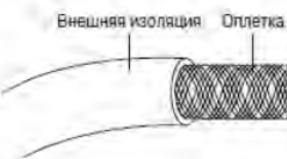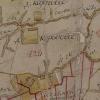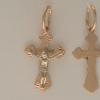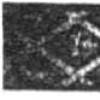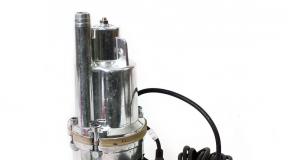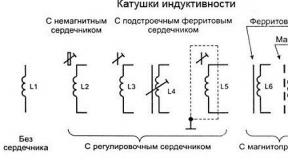A frozen moment: historic photographs taken for the first time. Photographs, each of which is a terrible story (15 photos) I am haunted by vivid memories of murders and corpses, and anger and pain ... Pictures of starving or
Throughout history, man has sought to convey as accurately as possible the visual images he sees. For many centuries, he learned to do this with the help of stone, coal, paints and other improvised means. Until the very moment when he came up with devices that do this as accurately as possible. After this discovery, many events have forever remained in the memory thanks to documentary evidence.
History knows many examples when an ordinary photograph taken at the right moment turned out to be something more than just a good shot. Sometimes a well-aimed frame became a symbol of its era, the personification of moods and events. Who doesn't know the famous photo of the Fab Four at the Abbey Road crossing? Or the legendary frame with a waving flag on the moon? Or Alberto Korda's portrait of Cuban revolutionary Ernesto Che Guevara?

Or a picture of the most famous scientist with his tongue hanging out? Each of these and many other photos has its own interesting story, sometimes sad, sometimes funny. Albert Einstein, for example, was very fond of his portrait with his tongue hanging out.

In fact, the legendary photo is just a fragment of a picture taken on March 14, 1951, the scientist’s birthday, which many jokingly called “pi” (3.14). In the original image, little known today, the famous physicist was sitting in the back seat of a car between Dr. Frank Aydelotte and his wife.

A photographer from United Press International named Arthur Sasse asked the scientist to smile, so to speak, to make "the face simpler." Quite tired Einstein, who on this day did nothing but smile for other photographers, suddenly stuck out his tongue and defiantly turned away. We must pay tribute to the photographer - he was not at a loss and managed to catch the right frame.

Some time later, Einstein ordered several of these photographs for himself and sent them as postcards to his friends. About how valuable this photo is for humanity, says, for example, the following fact: in 2009 it was sold at auction for 74 thousand dollars.
Today we will not remember all the stories associated with such legendary shots. In this article, we would like to talk about something else - about the very first photographs in different fields and about the people who had a hand in creating them. Many of these images have gone unnoticed by mankind. At the same time, their significance is much higher than that of those same legendary photographs that are printed on magazine covers, posters and T-shirts.
⇡ Painting from the gap
It may seem strange, but the photographic image was seen long before the advent of the first cameras. Before a person learned how to save it on media, he made an interesting discovery for himself - he invented a camera obscura. Perhaps you made an experimental model of such a camera in physics lessons. This is the simplest device, which is a hollow box, which instead of one of the walls has a thin layer of translucent paper. On the opposite side, there is a tiny hole about a square millimeter through which light rays penetrate into the device and create a relatively clear inverted image on a thin layer. The very name camera obscura in Latin means "dark room". It is not known for certain who first drew attention to this effect. According to one version, the first to describe the action of a camera obscura was the Chinese philosopher Mo Tzu, who lived around 470-391 BC.

He was one of the first to discover the effect of the camera obscura, which the philosopher called the "collecting plate" and "the room with locked treasures." In those distant times (and this was a little later than the death of Confucius), few people understood the significance of this “miracle”, and the observation of the Chinese sage in China was forgotten for a long time.
Regardless of the philosopher Mo Tzu, the effect of the inverted image was discovered by the Greek philosopher Aristotle, who, according to legend, noticed during the period of a solar eclipse that a crescent moon was clearly visible in the shadow cast by the dense crown of a tree. The Greek scientist described what he saw in his work Problemata, and it became one of the earliest known written evidence of the camera obscura effect. Aristotle also demonstrated this effect to his students, using a simple sieve for this purpose.

⇡ About the benefits of erroneous calculations
In the Arab world, the discovery or, rather, the description of the camera obscura belongs to the famous scientist Ibn al-Haytham from Basra (965-1039 AD). Research in the field of physics, optics, mechanics, astronomy and mathematics brought this man world fame. Subsequently, the works of Ibn al-Khaytham were published in Europe under the name Alhazen (such a name was more familiar to Europeans of that time and easier to remember).

Perhaps Ibn al-Khaytham would never have paid attention to the camera obscura, but chance helped him. Or rather, an unpleasant story that the scientist fell into. While doing research, Ibn al-Haytham somehow made a calculation of a dam that could redirect the flow of the Nile. The rumor about such an ingenious project reached Egypt, and Ibn al-Haytham was invited by the local caliph al-Hakim to build this dam. But, once on the spot, Ibn al-Khaytham realized that his idea of redirecting the waters was not feasible with the technical means that were at his disposal. I had to confess to the caliph that it was impossible to build a dam on the Nile. This angered the Egyptian nobleman so much that Ibn al-Haytham was punished. He was placed under house arrest and all his property was confiscated. To avoid execution, Ibn al-Haytham pretended to be insane and portrayed a madman until the death of the caliph. When he died, Ibn al-Khaytham quickly proved his sanity and returned to his former life. All the time that he was under house arrest, the scientist did not stop doing science and during this time he studied the effect of the camera obscura very well.

The Arab scientist used a camera obscura to observe the sun, which allowed him to keep his eyesight. In addition, the experiments prompted the scientist to think about the rectilinear propagation of light. Before the appearance of the works of Ibn al-Khaytham, it was believed that human vision works on the principle of radar - some kind of rays come from the eyes that explore everything around, allowing a person to see. The Arab scientist literally turned this idea upside down, stating that the rays do not come from the eyes, but, on the contrary, enter them, interacting with the human organ of vision.
Many of the discoveries, assumptions and studies made by this man are striking in their foresight. For example, in his writings, Ibn al-Haytham makes an amazing conclusion about the final value of the speed of light.
⇡ Da Vinci - a genius who knew everything
The camera obscura was not spared by the genius of one of the most outstanding scientists of the entire existence of mankind - Leonardo da Vinci. The Italian scientist tried to understand how the human eye works, and Leonardo calls the camera obscura mentioned in his notes “artificial eye”. One of his manuscripts shows a characteristic sketch. On it, a person uses a similar method of projecting an image onto a canvas to paint.

Although Leonardo da Vinci never had a complete work as such, there are numerous scattered compilations of his works. In one of these collections, "Treatise on Painting", Leonardo describes in detail the principle of the camera obscura.
⇡ The natural magic of what you see: Giambattista della Porta
When reading advertising booklets from manufacturers of modern digital cameras, one gets the impression that anyone can now engage in photography. Of course, this is not entirely true, but there is still some truth in such statements. The procedure for recording an image these days is so simple that even a child can take pictures automatically. This pleases someone, because there is no need to deal with the device settings, but it upsets someone, because such photos are often devoid of any artistic value. About five centuries ago, an Italian named Giambattista della Porta wrote the same thing in his works, but about a camera obscura.

He argued that with the help of this device, any person, even ignorant in art and painting, can follow the contours of the image appearing on the screen with a pencil or brush.
Giambattista della Porta was interested in various fields of science, including botany, cryptology, magic. In his book "Natural Magic" (Magiae Naturalis), the Italian scientist told how the camera works, but at the same time he justified his discovery rather vaguely, explaining all the incomprehensible moments with magic and sorcery.
But he found quite a practical use for his device - to create images on the screen in the theater, a kind of background with scenery. The audience, however, did not appreciate the newfangled special effects, and some fled in horror from the performances at which the inventor tried to demonstrate a picture from a camera obscura.

In later editions of the Magiae Naturalis, Giambattista della Porta even tried to modify the design of the camera obscura by adding a convex lens to make the image brighter. And although he was not the inventor of the camera obscura, his book contributed to the growth of the popularity of this tool. By the way, the initial circulation of his manuscript was only a couple of dozen copies, and the author himself claimed that he wrote this work when he was 15 years old.
Experiments with "magic" during the time of the Holy Inquisition almost went sideways to him - Giambattista della Porto was denounced, he was forced to tie with miracles and even leave the country for a while. The scientist was acquitted, but after all this hype, he had to change his craft - he switched to writing plays and comedies.
This man had other accomplishments as well. For example, today few people know that della Porta invented the telescope a few years before Galileo, but died before completing his treatise De telescopiis.
⇡ Drawing according to the rules
During the time of Giambattista della Porta, there was an increased interest in the camera obscura. Many scientists independently began to improve this device and look for its application. For example, in his book La practica della perspettiva, published in 1568, another Italian, Daniele Barbaro, first suggested that architects use this tool to correctly project images onto canvas.

The invention of the camera obscura did not kill painting, but, on the contrary, contributed to the creation of new masterpieces. Talented artists were able to create their work faster using a prompt on the camera obscura screen. For example, the famous masters of the brush, the Dutch artist Jan Vermeer and the Italian Canaletto, did not see anything wrong with drawing the perspective as accurately as possible using a camera obscura. True, in fairness, it must be said that not all contemporaries of these artists recognized such a technique. There were those who reproached them for this and considered it unworthy to use such tools in their work. Mostly they were envious and ill-wishers.
In the image below, you can evaluate the work of the artist yourself. This is a miraculously preserved sketch of Canaletto, made with a camera obscura. It was used to create the painting Venice: The Campo SS. Giovanni e Paolo. You can evaluate the result, so to speak, "before" and "after".

We can draw a very interesting conclusion from this document: the camera obscura was used only as an auxiliary tool - in order to draw a "cheat sheet" with the correct angles of buildings in perspective. The paintings themselves (at least Canaletto) were drawn from a blank canvas.
⇡ Kepler: first discoveries with camera obscura
According to the German astronomer Johannes Kepler, Giambattista della Porta was not a scientist in the broad sense of the word, since magic and miracles occupied his mind. Therefore, when a German astronomer learned about the camera obscura from Magiae Naturalis, he did not at first attach due importance to the device.

However, while dealing with Galileo's research, Kepler remembered the strange device and tried to use it for his observations. With his help, the scientist made a number of amazing discoveries. For example, while observing the image of the solar disk on a camera screen in May 1607, Kepler discovered a strange dark spot, which he mistook for Mercury passing in front of the Sun. In fact, Kepler saw a spot on the Sun.
⇡ And finally - the very first photo
Many believe that the first photograph taken by a man was the famous “view from the window”, an 1826 work by the very first photographer named Joseph Nicéphore Niépce.

However, this photographer actually started taking his pictures four years earlier. The earliest photographs of Joseph Niepce have sunk into oblivion, and for a long time it was believed that the photograph from 1826 is the oldest photograph on the planet. However, in March 2002, an event occurred that lengthened the history of photography by a year. In one of the private collections, owned by the booksellers Marie-Therese and Andre Jammes, a photograph of Niepce from 1825 was found. This photograph is the first photocopy of a painting by a 17th-century Flemish artist. This is an invaluable documentary evidence of the preservation of the design made by light.

Some experts at the auction questioned whether the image could be considered a photograph. The fact is that it is a print and, in fact, is a printed pattern. On the other hand, the heliogravure method invented by Niepce was used to create an impression, which means that the creation of an image would be impossible without chemical reactions with light. In general, if we discard the conventions, the image can be considered a photograph.
The French government proclaimed this work the property of the nation, which should remain in the country, and it was bought by the National Library of France for almost half a million euros.
⇡ Photo is transferred to the air
At all times, people thought the same way. And one hundred and fifty years ago, just like today, he wanted to amaze others with an amazing shot. To do this, he, above all, sought to capture stories that not everyone can see. Experiencing the exciting thrill of finding a good angle, a person began to experiment with the position of the camera. One of the first places from where he hurried to photograph the world was the sky.
It was extremely difficult to carry out aerial photography at that time for obvious reasons. But although the Wright brothers took to the air a controlled car only in 1903, almost half a century before this momentous event, in 1858, a French photographer under the pseudonym Nadar took a stunning photograph - a panorama of Paris. Using a balloon, Gaspard-Felix Tournachon (Nadar's real name) managed to catch with a lens what only the most desperate aeronauts could see until now.

In 1855, Nadar patented aerial photography from a balloon, thus reserving the right to take pictures from a great height for the coming years.
The first shots had to be developed right on the spot, that is, in the air. The reason for this was that the gas used to raise the balloon had a detrimental effect on photographic plates, destroying their collodion coating.
Unfortunately, many of the first bird's-eye photographs have not survived to this day. Nevertheless, in private collections you can find quite rare specimens, such as this picture. This panorama of Paris in 1858 was taken from a height of 520 meters.

If you've read Jules Verne's From the Earth to the Moon and Around the Moon, Nadar's personality should be familiar to you. Verne used the image of his friend as a prototype for one of the main characters - Michel Ardant, whose last name is an anagram of the pseudonym Nadar.
We believe it will not be an exaggeration to say that humanity owes a lot to this photographer. During his life, he took many photographs that open the veil of time for us. Including he photographed a considerable number of celebrities of that time. George Sand, Alexandre Dumas, Jules Verne, Charles Baudelaire, Sarah Bernard, Franz Liszt, Emile Zola, Claude Monet - this is not a complete list of people whose photographic appearance has remained in history thanks to Tournachon.
⇡ Man from Boulevard des Capucines
Nadar's studio was located on the legendary Boulevard des Capucines, at number 35.

It was on the balcony of the studio that the impressionist Claude Monet painted his famous painting Boulevard des Capucines in Paris.

In vain, critics fumed about the fact that photography would become a "disastrous direction for painting." Photography not only did not kill painting, but in the most direct way contributed to the emergence of a new trend in art - impressionism.
This term was coined in his feuilleton by a journalist named Louis Leroy. He used a derivative word from the title of the painting by Claude Monet “Impression. Rising Sun". The article, in which the journalist dropped the word “impressionist”, was devoted to the exhibition of works of the so-called “Salon of the Rejected”, which exhibited works that were rejected by the members of the jury of the Paris Salon, the most authoritative exhibition of that time. And this exhibition was held just in the salon of Nadar, who considered that the scandalous criticism of "second-rate paintings" in the newspapers would once again contribute to the advertising of his photo studio.
At the end of the 19th century, the first screening of short films by the Lumiere brothers was held in a neighboring house on the Boulevard des Capucines, but by that time Nadar had in a sense outstripped the fathers of cinema.
In 1886, a French photographer, together with his son, published a series of more than twenty photographs taken at the birthday party of the world famous chemist Michel Eugène Chevrel. This photo essay was called "The Art of Living a Hundred Years" - that was the age of one of the fathers of organic chemistry.

A series of photographs was taken one after another, so that when one shot was replaced by another, there was a feeling of slow motion. A few years later, the Lumiere brothers recorded a video sequence of these frames, thanks to which the world's first slide show appeared on the screen.
And the most curious thing about this photo session is that the revolutionary film photography technology for that time, proposed by the well-known Kodak company today, was chosen as a working tool. Nadar was a spokesman for George Eastman's factories and was one of the first to appreciate the convenience of quick photography. There was no need for tedious changing of photographic plates, shots could be taken one after another.
And in 1888, Kodak generally made a revolution in photography - the company introduced the world's first soap dish, a sample of the nineteenth century. The new model was as simple as it could possibly be. The advertising slogan read: "You push the button, we do the rest!"

This unit could easily take a hundred shots without any reloading, and the lens had a constant aperture and gave a clear image at a distance of 2.5 meters to infinity.
Nadar had a similar technique. Inspired by aerial photography, the French photographer built a huge balloon at his own expense, which he called "Giant". October 4, 1864 Nadar went on his first flight.
There are many photographs with images of Nadar himself, who sits in a balloon basket and “examines” something through binoculars with an important air.

In fact, these are not real photos, but staged, which can be clearly seen in the next photo. From this we can conclude that Nadar was, if not the first, then one of the first who came up with the idea of using scenery for filming.

The idea of "animated" photographs constantly occupied Nadar. Around the same time (1865), he took an interesting photo that created the illusion of movement. He filmed himself while spinning in his chair. The result is a series of frames, combining which you can get the animation of the turning photographer. Nadar called his work "turning self-portrait".

⇡ Photo in military service
Any advanced discovery at all times aroused the interest of military structures. The benefits of the invention of photography for them immediately became obvious. With the help of photographs, you can make copies of important documents, you can fix the location of enemy forces, photograph secret objects, and so on. The military soon had to put this intelligence strategy into practice.
In 1870, during the Franco-Prussian War, Paris was besieged. As a result of these actions, air became the only way of postal communication. Nadar, along with other aeronauts, organized a fleet of several dozen balloons. On these balloons it was possible to freely fly over the fortifications of the Prussian troops. With the help of balloons, the first ever spy aerial photography was carried out. The photographed positions of the enemy were recorded on flexible collodion films, which were then rolled into tubes and tied to carrier pigeons, which, in turn, delivered valuable information. Also, anyone could send a letter to the front line for 20 centimes.

Despite the efforts of Nadar, these military tricks did not affect the outcome of the war, and Paris eventually capitulated. But the idea of using aerial photography for reconnaissance from that moment was adopted by the military around the world.

⇡ First underwater photo
Having mastered shooting from the air, a person began to look for a way to plunge into the abyss of the sea. And the first underwater shot was taken by William Thompson. In February 1856, he and his friend Mr. Kenyon swam into Weymouth Bay, after which a sealed box on a pole, approximately 13x10 cm in size, was lowered into the water. It made it possible to take the first underwater shot. However, this photograph did not bring fame to William Thompson, which is not surprising - you can only make out what exactly is depicted on it, except on the night of January 1.

Another person who could claim to be the first to capture the underwater world is the German engineer Wilhelm Bauer, whose main occupation was the construction of underwater submarines and work to raise sunken ships. According to historical data, in the fifties of the XIX century he made attempts to photograph the underwater environment in Kronstadt using one of the side windows in his Seeteufel submarine. This boat, controlled by a pedal drive, could take a team of 12 people. Unfortunately, these photographs have not survived.
⇡ Louis Boutan: the man who "drowned" the camera
The fate of Louis Botan, a man who can rightly be considered the father of underwater photography, turned out to be quite different.
Professor of Marine Biology Louis Boutan was very interested in the possibility of underwater photography, since this type of observation would allow a better study of marine life.
Louis had quite a lot of experience diving in a diving suit and more than once observed the beauty of the sea depths. To capture them in a photograph, Louis turned to his brother Auguste, who was an engineer, for help. Auguste helped design the underwater camera. The underwater camera model he created made it possible to control the diaphragm and the shutter, and also made it possible to compensate for the pressure on the camera using a special balloon filled with air.

The first experiments disappointed Botan. He discovered a very serious problem - the lack of lighting underwater. Under normal conditions, photographers used magnesium or a mixture of magnesium for flash, but this method of lighting was not very suitable underwater, since oxygen is needed to support the combustion process. To solve this problem, Louis, together with an electrical engineer friend, designed a special type of flash, which was a sealed lamp with a magnesium ribbon inside, filled with pure oxygen. The ignition was carried out using an electric charge.
But this method did not give the desired result. Magnesium oxide smoke quickly smoked the glass, and the flash became useless. In addition, the heat generated by the flash increased the likelihood of the lamp exploding.

Later, together with his assistant Joseph David (Joseph David), Louis created a new flash model. It was a lamp with a barrel filled with oxygen. The flame of the lamp was maintained by an alcohol solution. With the help of a special pear, magnesium powder was blown into the lamp, causing a flash. It cannot be said that this design was very convenient (you had to drag a whole barrel under the water), but in 1893 it made it possible to create a series of unique underwater photographs.

Illustration from Louis Botan's book La photographie sous-marine
After that, the scientist continued to come up with more reliable shooting methods - he invented a more compact flash design, reduced the size of the camera, and finalized the lens. To increase the maneuverability of the structure, Louis began to use a lighting system consisting of a pair of carbon arc lamps.

This photo of Louis Botan in heavy diving gear is considered to be the first photograph of a person who was taken underwater.
Louis Botan also came up with a number of tricks and tricks to make underwater photography easier in poor visibility conditions. For example, to shoot a beautiful flock of fish, he used a reflective screen that the diver had to hold as a background at the time of shooting.

⇡ The road to the clouds: the first attempts at aerial photography
Modern photographers often become popular thanks to unusual ways of shooting. For example, it is enough to raise the camera to a great height with the help of a quadrocopter and take pictures from a bird's eye view - interest in such work is guaranteed. True, figuring out how to launch a camera into the sky is a very difficult task. And for the end of the 19th century, photography “from under the clouds” seemed in general to be something completely incredible and fantastic. Nevertheless, human ingenuity made it possible to solve this problem.
As mentioned above, the first attempt to master aerial photography was balloon travel. The next one to discover a new way of aerial photography is the French engineer Aime Laussedat.

This scientist dealt with the issues of geodesy and cartography, and was also interested in photography. In his works on photogrammetry (a method of remote topographic analysis from images), he spoke about the possibility of photography using a kite. True, Lossed himself never tried to put this idea into practice.
Edmond Douglas Archibald also tried to study this method of shooting. He worked as a meteorologist and performed measurements of wind speed at different heights, tying anemometers to the bundle of a kite. In 1885, Edmond even patented his own flying device design, the prototype of the modern balloon. Archibald was also very interested in the possibility of using his kite design for military purposes. In several published works, he claimed that with the help of kites in 1887 and 1888 he was able to obtain the first aerial photographs. However, he did not take any photographs during his life, so the official “discovery” of aerial photography belongs to the one who was able to document it.
That person was Arthur Batut.

He approached the implementation of the idea of aerial photography very meticulously and throughout all the tests he constantly improved the design of his kite, which made it possible to lift the camera into the air. The latter, by the way, also had to be done by hand, using lighter materials than in conventional cameras.

Raising a kite to a height of 127 meters above sea level, he photographed his house. Many years later, aerial photographers tried to create a replica of a kite and take a picture from the same point today. What happened, you can see for yourself.

He also took some interesting pictures, including, for example, the panorama of La Bruguiere in France.

⇡ Pigeon photographers
And of course, photographers of the century before last could not ignore the easiest way to get an aerial photograph. Pigeon mail prompted inventive photographers to come up with an obvious and original solution. It was only necessary to “attach” a camera to the bird and launch it into the sky. Pigeon photography had both strengths and weaknesses. For example, it was impossible to control the angle and position of the camera. On the other hand, birds could fly to dizzying heights, and the photographer did not have to spend money on building and flying aircraft. Eventually the pigeon returned and all that was left to do was check the blind shots.
The first to receive photographs with the help of pigeons was a German photography enthusiast and pharmacist by profession Julius Neubronner (Julius Gustav Neubronner).

In fact, it was not quite a simple pharmacist. In 1888, Julius Neubronner was awarded the title of court pharmacist to Queen Victoria of Saxe-Coburg-Gotha, widow of Frederick the Third. A solid financial position made it possible to engage in the main hobby of his life - photography. Although, it must be said that Neubronner's passion was somehow connected with work.
Even his father, Wilhelm, used pigeon mail to send medicines. Starting in 1903, Julius continued this practice: he organized the pigeon air delivery of goods from a supplier in Frankfurt to his city of Kronberg. Once his pigeon strayed off course and arrived very late, but full and happy. This little incident gave Julius an idea. He thought it would be a good idea to hang a camera on the pigeon so that he could get an idea of where he would fly. An investigative experiment revealed the deceit of a dove. It turned out that the air mail carrier flew to the chef of the restaurant in Wiesbaden on the way. Since there was enough food in the kitchen, the pigeon was no longer worried about the usual transportation of medicines.
To mount the device on a bird, it was necessary to redesign the camera itself, to make it smaller and more compact. The shutter release delay was regulated by a clock pneumatic device, due to which the picture was not taken immediately, but only when the pigeon had time to gain altitude.

There were several armor for pigeons, as well as mounting options, and all of them more or less resembled small backpacks that hung on the chest of a bird and were held with narrow straps.
Experimenting with the camera, Neubronner realized that the scope of such aerial photography is simply enormous. In 1908, Julius was so inspired by the resulting photographs that he even patented his idea as a "Method of obtaining landscape photographs." True, at first his application was rejected, because the photographs were considered fake. Nevertheless, the pharmacist-photographer was able to prove their authenticity. After that, Neubronner's invention was adopted by military structures, and Julius himself was given the task of solving a number of technical problems, which the pharmacist-inventor successfully coped with.
He developed dozens of camera models, including a multi-shot camera and a stereo pair. A mobile dovecote was also invented, which the military could carry along, changing its location during maneuvers. The German government even organized an entire school for the training of photographic pigeons.

⇡ First color photo: a secret revealed by a Scot
Sometimes technical progress is hampered only for the reason that it is difficult for people who are far from science to realize the practical benefits of a particular discovery. Even in our age of electricity and computer devices, it can be very difficult for an average person to understand how the simplest laws of physics make airplanes fly and light bulbs give light. And what can we say about the time when houses were lit with stearin candles at night!
That is why more than twenty years passed between the invention of black and white photography and color photographs, although there were no technical barriers to obtaining color photographs. The famous physicist James Clerk Maxwell helped develop color photography.

And it must be said that the color image was not the goal of the scientist's research, but was only an auxiliary demonstration of his discovery. The main thing that this scientist found as a result of his experiments is a color model. Today, any person involved in computer graphics is very familiar with the RGB color model. This color model (or, as it is also called, the color space) allows you to get a color image by mixing the three components of the picture - red, green and blue.
James Clerk Maxwell did so much useful work in his short life that it would be enough for a hundred or two scientists. A Scot by origin, he chose a very symbolic object to demonstrate his discovery - a bow rolled from a tartan ribbon, or plaid. The great physicist asked Thomas Sutton to make him three negatives of this object - through a green filter, through a red one and through a blue one. Highlighting three superimposed negatives, Maxwell on May 17, 1861, at a lecture at the Royal Institution, demonstrated the first color photographic image.

⇡ Levi Hill: the pastor who saw the color photo first
As is often the case, in the scientific world, great discoveries are often contested. And before Maxwell, there was at least one serious attempt to create a color image. And although everyone recognizes the English physicist as the discoverer of color photography, in fairness it must be said that another person was the first to receive a color photo. His name was Levi Hill.

He was the pastor of the Baptist congregation in Westkill, New York. Levi was very interested in photography and invented his own method in 1850, which he called "heliochromia". This guy is unlucky in a way. He was considered a fraudster, accusing him of forging color photographs. Like it or not, it was possible to find out only after a century and a half. First, in 1981, Professor Joseph Boudreau made an attempt to replicate Hill's experiments. The professor relied on the theory outlined in Hill's work called Heliochromy.

Then in 2007, the final point in the dispute “who was the first inventor of color photography” was put by the scientists of the Smithsonian Institution Dusen Styulik (Dusan Stulik) and Art Kaplan (Art Kaplan). To summarize the experiences of these people, we can say that indeed Levi Hill found a way to get a color photo. However, his method was imperfect - the colors in the image looked unnatural, and some shades were not there at all. Realizing the shortcomings of his technology, Levi retouched his own shots by adding some color pigments by hand. This is precisely what was noticed by Hill's contemporaries and served as arguments for accusing him. Experts of that time considered that his color photographs were just colorized photographs taken using the daguerreotype method. The pastor tried to patent his invention, but was refused, probably for the same reason. Some of Hill's color work can still be seen today, although time has certainly not been kind to them. The colors are barely visible on them.


⇡ Forgotten secrets of the first photos
The actions of many photographers are similar. They evaluate the light, the angle for a long time, ask them to raise or lower their chin, and then the signature phrase about the bird follows. By the way, where did the expression "a bird will fly out now" come from? The fact is that in the first cameras a rather long shutter speed was used, during which people were required to stand still. Of course, there were no problems with adults, but it was very difficult for children who were brought to a photo shoot in the studio to be convinced that it was completely impossible to move for some time. To calm the fidgets, photographers came up with a trick. For this occasion, they kept a toy bird, which they put directly on the camera. Sometimes it was an ordinary toy, but more often a whistle toy filled with water was used. A small hose was connected to it, at the end of which there was a rubber bulb. As soon as the photographer squeezed this pear, the bird made a characteristic trill, forcing the astonished children to freeze in front of the lens.

Adults during the photo shoot also sometimes had a hard time. Sometimes especially zealous photographers simply tormented poor clients, forcing them to make this facial expression and that. Many of the visitors to the photo studio ended up with a pained expression in the pictures. Steadfastly endure all the recommendations of the photographer, and then for a long time to stand at attention and not blinking could not everyone. In this case, for particularly “frail” clients, photographers had a special accessory called a kopfhalter, or headrest. It looked like a tripod, and was usually made of cast iron for stability. Similar to an instrument of torture, it made it possible to support a person's neck during exposure with a special horn.

In many old photos, this tool treacherously peeks out from behind the back of a person in the frame or stands quietly nearby, resembling a wardrobe hanger.

The first photographers had other "methods". For example, thin clients with sunken cheeks could be given special pebbles or balls for a while to keep in their mouths during exposure. It happened that this pebble was swallowed, and the photographer was in a hurry to reassure the client: "Don't worry, I still have a lot of them." A terrible thing, but people endured - many wanted to get a photo as a keepsake, and for this they were ready to pose for half an hour or more, sometimes falling asleep and losing consciousness.
⇡ Unearthly photos
It took humanity almost half a century to realize Tsiolkovsky's ideas and launch a rocket with a man into space. But the photographs taken with the help of rockets were obtained much earlier than this momentous event. In the September 1888 periodical La Nature, the French pyrotechnician Amedee Denisse published a drawing of a rocket for aerial photography. As conceived by the engineer, a rocket with a camera was launched into the air, after which, at maximum height, its parachute dome opened and the device smoothly descended, photographing the earth through a special optical system of twelve lenses. National Geographic: expanding the horizons of photography
Founded in 1888, the National Geographic Society has had a very strong influence on a wide variety of scientific disciplines. In addition, it significantly contributed to the development of photography in the 20th century. Here are just some of the achievements made possible by the support of this society.
Magazines and periodicals that were published at the beginning of the last century contained only black and white photographs. The exception was color drawings, as well as hand-colored photographs. The first magazine to boast a "real" color photo was National Geographic. Page 49 of the July 1914 issue showed a garden in bloom in Ghent, Belgium.

In the same magazine a few years later, in 1926, the first color photographs of the underwater world appeared. One of the color shots from that issue was of a wild boar fish (hogfish, or Lachnolaimus maximus).

To capture this shot, William Longley and Charles Martin used a rugged, waterproof camera housing and plenty of magnesium powder to light up the bottom of the reef.
The staff of the magazine themselves created the history of photography. For example, associate editor Melville Bell Grosvenor took the world's first aerial color photograph with the Statue of Liberty in 1930.

Color photographs were rare at the time, and most photographs were taken in monochrome. The quality of modern photographs cannot be compared with what could be observed in the middle of the last century. Modern photographs are much sharper and have natural colors. Therefore, it seems very strange that some blurry black and white photograph could be considered unique and have any value. And yet even black and white photos could show amazing things. For example, to open an incredible view of the Earth from a height where the curvature of the horizon is already visible.
First photograph of Earth from space
In the middle of the twentieth century, the era of astronautics began. Rockets and satellites increasingly flew into space, delivering interesting and unique shots to people from there. The first photograph of the Earth taken from space was taken by the American V-2 suborbital rocket. This happened on October 24, 1946. V-2 has been sending photos to Earth for four years and has photographed our planet over a thousand times in that time.

⇡ The first photo of the dark side of the Moon
The period of revolution of the Moon around the Earth coincides with the period of revolution of our satellite around its axis, so we always see the same side of the Moon. The other side always remains in the shadows. A curious fact that not everyone knows is that the border between the light and dark sides of the Moon (and any other celestial body) is called the terminator. Since ancient times, mankind has been interested in the question - what is on the reverse side? Interest faded only in 1959, when the terminator was overcome with the help of the Luna-3 interplanetary station. The vast majority of the data received and recorded on magnetic media could not be subsequently reproduced. The only image that more or less showed the far side of the moon was taken by the Yenisei phototelevision device, a standard analog traveling beam camera. But even at the same time, the picture was very spoiled by interference, since the signal was weak.
A few years later, Soviet scientists made a new attempt and obtained clear images of the far side of the Moon with the help of the new Zond-3 interplanetary station. The composite image gives us an idea of what our satellite looks like, so to speak, “from the back”.

According to the data obtained (in vain, perhaps, they launched it?), the USSR Academy of Sciences compiled a detailed Atlas of the far side of the Moon. With each new victory over space, the stars seemed closer. Such an atlas could well come in handy if fate brought a Soviet man to the moon, which, by the way, did not seem to everyone a fantastic situation.

⇡ Star racing: the first pictures of Venus
During the Cold War, any achievement of Soviet science, if covered in the media, was presented not so much as a victory for the human mind, but as a confirmation of the correctness of the chosen ideology. This was done infrequently and very carefully, many very important discoveries in science were strangled by numerous stamps "secret". Nevertheless, when a good reason arose to demonstrate its superiority over the West, the Soviet government gave the go-ahead, and unique documentary footage appeared in periodicals.
Before launching an interplanetary station to Venus, Soviet scientists had to carefully collect information about the conditions on its surface. For this, another probe was sent - Venera-4, whose mission was to study the features of the neighboring planet and collect various information about its atmosphere and topography. When the data on Venus were analyzed, scientists created the Venera-9 and Venera-10 interplanetary stations, making their designs resistant to high atmospheric pressure and high temperature.
In 1975, descenders were separated from Venera-9 and Venera-10, which successfully “venerated” and made the first pictures of the surface of a distant planet. These black and white photographs were transmitted with some errors and therefore needed to be corrected.


To capture a panoramic image, a camera with an opto-mechanical drive was used, which set the oscillatory movement of the scanning element, thereby providing horizontal scanning. At the same time, the camera's periscope was set in motion and rotated smoothly, covering a large viewing angle. Every few minutes, the image transmission was interrupted for a short time, during which the device transmitted the control readings of the sensors. Because of this, small noise bands appeared on the image, which were manually eliminated after processing.

Having received black and white pictures from another planet, a person wanted to see the same thing, only in color. And for this, on October 30, 1981, the Soviet automatic interplanetary station Venera-13 set off from Earth on a long journey. On March 1, 1982, a descent module separated from this station and successfully landed on the Venusian surface. Instead of the planned 32 minutes, the module lasted more than two hours in extreme Venusian conditions. During this time, he was able to record the readings of various sensors, record the thunder on Venus and take a series of unique photographs, including a panorama of the area.

⇡ First shot from Mars
The years 1975-1976 were rich in space discoveries. While the USSR was busy with Venus, the US was also implementing its own project to study another planet - Mars. As part of the NASA Viking program, the Viking-1 spacecraft was launched to the Red Planet, which entered Mars orbit in the summer of 1976 and successfully sent a descent module to the planet. When this module reached the surface of Mars, the antenna was extended and the rod with meteorological sensors was deployed. Turning on the camera, the device began to shoot a panorama of the Red Planet.


In addition to black and white frames, the first color image was transmitted to Earth.
⇡ Pale blue dot. farthest shot
And in conclusion - one more historical photo, which makes you think about how small a role is assigned to man in the Universe. Look at this picture.

It may seem to be meaningless and empty, but if you look closely, you will see a tiny dot on a grainy background. This point is you and me. It contains your city, your country, everyone you know. This photograph is a 1990 image of our Earth, taken from a distance of six billion kilometers by the most famous human-launched space hulk, Voyager 1. The idea to take such a picture was proposed by Carl Sagan, a famous American astrophysicist. To make it work, NASA specialists had to send a command to Voyager to turn around for a while towards the house. The photo was called Pale Blue Dot, which means “pale blue dot”. And Sagan himself later published the book Pale Blue Dot: A Look at the Future of Mankind in Space, in which he wrote literally the following: It is said that astronomy contributes to the development of modesty and the formation of human character. Perhaps there is no better demonstration of human stupidity and vanity than this distant depiction of our tiny world. I think it makes it clear that we should be responsible and kind to each other, that we should cherish the pale blue dot, the only home we have.”
We bring to your attention 15 photographs, behind which there are real stories that at one time terrified even the most experienced forensic experts.
The picture that went down in history under the name "The most beautiful suicide."
Evelyn McHale committed suicide by jumping off the Empire State Building. Photographer Robert Wiles, who happened to be nearby, captured McHale's body as it fell onto a UN limousine. Before committing suicide, McHale left her fiancé. Her suicide note read: “He will be better off without me. I couldn't be a good wife to anyone."

Regina Kay Walters
This photograph of 14-year-old Regina Kay Walters was taken by serial killer Robert Ben Rhoades, who was later captured driving a truck with a torture chamber in its trailer. Before taking this picture, Rhodes cut his victim's hair and forced her to wear a dress and high heels before killing her in a barn in Illinois.

Tyler Hadley.
Tyler Hadley, 17, wanted to throw a party, but his parents were at home, so he beat them both to death with a hammer. He hid the corpses, cleaned up the mess, and invited guests while the bodies of his parents remained in the house. This picture was taken the night after the murder, when Tyler confessed to his friend Max (left).

Photograph by Pulitzer Prize-winning photographer Kevin Carter.
South African photographer Kevin Carter worked in Sudan during the 1993 famine. The picture shows a starving child crawling towards a food distribution center while a vulture prowls nearby, waiting for easy prey. Carter could not approach the children because of the threat of infection. Three months after the Pulitzer Prize ceremony, 33-year-old Carter committed suicide, unable to bear the painful memories.

Travis Alexander.
The last photo of Travis Alexander taken by his ex-girlfriend Jodi Arias before he was murdered. She came to his house and, while they were fooling around, took several pictures of him. Travis' body was found in the bathroom five days later with 27 stab wounds, a slashed throat, and a bullet through his head.

Cult of the Heavenly Gates.
On March 26, 1997, 39 Heaven's Gate cultists committed suicide, believing that their souls would be taken to the Hale-Bopp comet by spacecraft. The founder of the cult, Marshall Applewhite, convinced them that aliens would soon cleanse the Earth, so they should leave this world.

Blanche Monier.
Blanche Monnier was kept in confinement for 24 years in a room where she had to live among her own feces. She was discovered in 1901 when someone told the police her whereabouts. A 24-year-old woman has not seen sunlight.

Reynaldo Dagsa.
Filipino politician Reinaldo Dagsa photographed his family during New Year's Eve celebrations. His killer also got into the frame. It turned out to be a car thief, whom Dagsa once hid behind bars.

"Temple of the Peoples".
American preacher Jim Jones (Jim Jones) founded the religious movement "Temple of the People", which went down in history as the largest mass suicide. 918 cult members committed suicide by cyanide poisoning.

Dean Corll.
Dean Corll was nicknamed Lollipop because he constantly handed out candy to the neighborhood kids. He was one of the most brutal serial killers in history. Between 1970 and 1973, Corll raped and killed at least 28 boys. He had two accomplices, one of whom shot him. This picture was found among his personal belongings. The boy from this photo was never identified, which leads to terrible thoughts that the victims of the maniac were much more than 28.

John Lennon and his assassin Mark David Chapman.
Chapman killed Lennon just hours after this picture was taken. When Chapman was asked why he did this, he replied: "I thought I would get his fame."

Massacre at Columbine High School.
This picture was taken two weeks before the Columbine massacre, when 12 students and one teacher were gunned down. In the upper left corner, you can see two schoolchildren who imitate shooting at the camera. Many see this gesture as a terrible prophecy.

Photo taken in the gas chamber in Auschwitz, Poland.

Attack in Oma.
This picture was taken minutes before the Omagh attack in Northern Ireland. The explosive device was planted in the red car you see in this picture. The explosion, organized by the Genuine Irish Republican Army, claimed the lives of 29 people. The father and son captured in this picture survived.

Traveler Christopher McCandless.
The last self-portrait taken by Christopher McCandless before he traveled to the uninhabited part of Alaska. Shortly after this picture was taken, hunters found McCandless's body in an abandoned bus. As it turned out later, the traveler was poisoned by the root of a poisonous plant.
In fact, we do not know the background of this particular photo and other photos in the gallery. It is only known that these photographs were taken in the Post-mortem genre - and the people depicted in them were dead at the time of shooting. For example, the youngest girl in the first photo is dead. Her body is held with a special tripod. The rest of the children in the photo are most likely her brothers and sisters. Today, these photographs scare us, but in the 19th century, with the invention of the daguerreotype, people were finally able to afford to keep portraits of their loved ones as a keepsake, because the services of a painter were expensive, and few could order a portrait. At the same time, infant mortality was quite high, and a post-mortem photograph was often the only way to preserve the memory of a child. During the life of the child, it was very difficult to do this because of the long exposure of daguerreotypes. However, not only children were photographed, portraits of the dead were generally very popular. As a rule, the deceased was filmed in the family circle, the body was given a sitting posture, sometimes some objects were placed in the hands. For greater resemblance to a living person, photographers sometimes drew open eyes on top of closed eyelids in the picture and applied a little pink paint to the cheeks.
Lightning strike
Popular

Brothers Michael and Sean McQuicken are photographed in this 1975 photograph by their sister Mary. She decided to capture her brothers on top of Moro Rock in California's Sequoia National Park. Two seconds after the picture was taken, they were struck by lightning. Only Michael survived (pictured right).
Clown Pogo
It is unlikely that the photographer could suspect something sinister in the hero of his picture: he knew that he was photographing Mr. John Wayne Gacy, an exemplary family man, a talented clown and generally a wonderful person. John not only entertained the kids under the name Pogo the Clown, but also ran his own construction business, joined the US Democratic Party, became the treasurer of a charitable society and was engaged in social activities. No one knew that this good-natured fat man had already served time for sexual harassment of teenagers. Until December 11, 1978, 15-year-old Robert Pist, who was last seen in the company of Gacy, disappeared: the teenager's mother said that he went to get a job with Gacy and did not return. The police got a warrant to search Gacy's house. The cops who descended into the jolly clown's basement without gas masks nearly passed out due to the smell of the many decomposing corpses found there. They found the bodies of 29 young people and teenagers whom Gacy had raped and then killed. The total number of victims of the maniac clown is 33 people.
girl painting
This little girl's name is Teresa, her name is written in the top corner of the board. The photo was taken not at school, but at an orphanage in Poland in 1948. Teresa painted the house. This is exactly how, in the form of a coil of barbed wire, a girl who grew up in a concentration camp imagines a house.
The Agony of Omaira Sanchez
On November 13, 1985, the Nevado del Ruiz volcano erupted in Colombia, which caused a real catastrophe: 25 thousand people died as a result of mudflows. Thirteen-year-old Omaira Sanchez was trapped in the rubble of her own home. Rescuers tried to pull the girl out, but her legs were pinched by debris, and Omaira could not be pulled out. The girl spent more than 60 hours up to her throat in water. People who were close to her said that she cried and often prayed. On the third night, Omaira began to hallucinate: she was very worried about being late for school. On the third day, Omaira Sanchez died, presumably from gangrene or hypothermia. Two hours before her death, rescuers brought a water pump to the scene, which could possibly help save the girl. But he turned out to be wrong.
Photographer Frank Fournier, who took the picture, said that he could only "show properly the courage, suffering and dignity of the girl." The society was quick to call the photographer a "vulture", to which he retorted the following: "I felt that this story was important for my reporting, and I am very happy that there is such a reaction, it would be worse if people did not worry about it ..."
Blanche Monnier
Frenchwoman Blanche Monnier spent 25 years in captivity in her own room - without light, naked, half-starved, among her own excrement and in the company of rats with whom the prisoner shared bread. This picture was taken in 1901, when the police, having received an anonymous letter, searched the house of Blanche's parents and found the prisoner. As it turned out, the very young Blanche was punished by her parents - they locked her in a room so that she would not connect her life with a man from a different social circle. Blanche Monnier was released when she turned 49. She was terribly exhausted and mentally damaged. And, although her physical health eventually recovered, Blanche's psyche never returned to normal. The former lover of Blanche, because of whom she was imprisoned, died 16 years before her release. Blanche Monnier's mother was sent to prison, where she soon died of heart failure.
The girl and the vulture
This photograph, which went around the world, was taken in 1993 in Sudan during a massive famine. Photographer Kevin Carter, who took this picture, received a Pulitzer Prize for it, and the photograph itself, bought and published by the New York Times magazine, shocked the public. The photo looks like a vulture is about to attack a dying child. In fact, the girl’s parents at that moment were busy unloading humanitarian aid from the plane and briefly left the girl alone, and the emaciated baby tried to catch up with them as best she could, at which time a vulture sat nearby. The photographer slowly, so as not to frighten away the bird, approached and took a series of shots from a distance of about 10 meters, and then drove the bird away. In reality, the vulture did not pose a serious threat to the child. Two photographers from Spain, José María Luis Arenzana and Luis Davilla, at the same time took similar pictures very close by and said that there were unusually many vultures around, and the children were so emaciated that the birds flocked to them as soon as the children stopped moving, but did not attack the living: “So you take a telephoto lens and shoot a child in front of a vulture. And although in reality it may be 20 meters from one to the other, in the picture it will seem that the vulture is about to start pecking at the child.”
Nevertheless, the press did not leave Kevin Carter alone. Here's what the St. Petersburg Times":
A person who adjusts his lens just to get a good shot of a suffering child is like a predator, just another vulture.
Three months after the Pulitzer Prize, Kevin Carter committed suicide. He glued a flexible hose to the exhaust pipe of his pickup truck, pulled it into the passenger compartment and left the engine running. Before being poisoned by carbon monoxide, Kevin wrote a suicide note, an excerpt from which reads as follows:
I am haunted by vivid memories of murder and corpses and anger and pain... Pictures of starving or injured children, psychos with itchy trigger fingers. Many of them are policemen. Or executioners...
We warn you right away: it is better not to look at these photos for especially impressionable people. At one time, the circumstances under which these photos were taken shocked even the most experienced criminologists. It evokes strong emotions.
The picture that went down in history under the name "The most beautiful suicide"

Evelyn McHale committed suicide by jumping off the Empire State Building. Photographer Robert Wiles, who happened to be nearby, captured McHale's body as it fell onto a UN limousine. Before committing suicide, McHale left her fiancé. Her suicide note read: “He will be better off without me. I couldn't be a good wife to anyone."
Regina Kay Walters

This photograph of 14-year-old Regina Kay Walters was taken by serial killer Robert Ben Rhodes, who was later captured driving a truck with a torture chamber in the trailer. Before taking this picture, Rhodes cut his victim's hair and forced her to wear a dress and high heels before killing her in a barn in Illinois.
Tyler Hadley

Tyler Hadley, 17, wanted to throw a party, but his parents were at home, so he beat them both to death with a hammer. He hid the corpses, cleaned up the mess, and invited guests while the bodies of his parents remained in the house. This picture was taken the night after the murder, when Tyler confessed to his friend Max (left).
Pulitzer Prize-winning photograph by Kevin Carter

South African photographer Kevin Carter worked in Sudan during the 1993 famine. The picture shows a starving child crawling towards a food distribution center while a vulture prowls nearby, waiting for easy prey. Carter could not approach the children because of the threat of infection. Three months after the Pulitzer Prize ceremony, 33-year-old Carter committed suicide, unable to bear the painful memories.
Travis Alexander

The last photo of Travis Alexander taken by his ex-girlfriend Jodi Arias before he was murdered. She came to his house and, while they were fooling around, took several pictures of him. Travis' body was found in the bathroom five days later with 27 stab wounds, a slashed throat, and a bullet through his head.
The cult of "Heaven's Gate"

On March 26, 1997, 39 Heaven's Gate cultists committed suicide, believing that their souls would be taken to the Hale-Bopp comet by spacecraft. The founder of the cult, Marshall Applewhite, convinced them that aliens would soon cleanse the Earth, so they should leave this world.
Blanche Monnier

Blanche Monnier was kept in confinement for 24 years in a room where she had to live among her own feces. She was discovered in 1901 when someone told the police her whereabouts. A 24-year-old woman has not seen sunlight.
Reinaldo Dagza

Filipino politician Reinaldo Dagsa photographed his family during New Year's Eve celebrations. His killer also got into the frame. It turned out to be a car thief, whom Dagsa once hid behind bars.
"Temple of the Peoples"

American preacher Jim Jones founded the Peoples Temple religious movement, which went down in history with the largest mass suicide. 918 cult members committed suicide by cyanide poisoning.
Dean Corll

Dean Corll was nicknamed Lollipop because he constantly handed out candy to the neighborhood kids. He was one of the most brutal serial killers in history. Between 1970 and 1973, Corll raped and killed at least 28 boys. He had two accomplices, one of whom shot him. This picture was found among his personal belongings. The boy from this photo was never identified, which leads to terrible thoughts that the victims of the maniac were much more than 28.
John Lennon and his assassin Mark David Chapman

Chapman killed Lennon just hours after this picture was taken. When Chapman was asked why he did this, he replied: "I thought I would get his fame."
Massacre at Columbine High School

This picture was taken two weeks before the Columbine massacre, when 12 students and one teacher were gunned down. In the upper left corner, you can see two schoolchildren who imitate shooting at the camera. Many see this gesture as a terrible prophecy.
Photo taken in the gas chamber in Auschwitz, Poland

Terror attack in Omagh

This picture was taken minutes before the Omagh attack in Northern Ireland. The explosive device was planted in the red car you see in this picture. The explosion, organized by the Genuine Irish Republican Army, claimed the lives of 29 people. The father and son captured in this picture survived.
Traveler Christopher McCandless

The last self-portrait taken by Christopher McCandless before he traveled to the uninhabited part of Alaska. Shortly after this picture was taken, hunters found McCandless's body in an abandoned bus. As it turned out later, the traveler was poisoned by the root of a poisonous plant.
Merchants

The photo itself is terrifying. Two people behind a counter selling... human remains? Yes, these are, of course, parts of the human body. But this is not the worst. The photographer's comment says that the photo was taken during the famine in Russia in the 1920s. The couple are parents who sell the remains of their own children to buy food for themselves. In those famine years, according to historians, people did not disdain human meat: they ate it to survive. But the author of the picture also reports that these parents themselves killed their own children in order to sell them, and this is completely unimaginable.
Chernoglazka

Black eyes, a swarthy face - and lifeless swollen hands ... The girl in the photo looks frightening, even if you do not know the terrible truth. And it lies in the fact that this girl has only a few minutes left to live. 13-year-old Omaira Sanchez from Colombia was covered in debris during a landslide caused by a volcanic eruption. For 60 hours she waited for rescue, being half submerged in water. Rescuers sent out desperate requests to bring the equipment they needed to save the girl, but in the end it arrived too late. At the moment when the picture was taken, others are trying to support and comfort the girl, but, judging by her eyes, she has already resigned herself to fate.
sobbing mother

Maternal tears are a painful sight, and if you know what is behind them ... The photo shows Mrs. Thompson, the mother of two small children, Rebecca and Raymond. The Thompsons had a picnic on the beach the day before. Mrs. Thompson was only distracted for a minute, and when she started looking for the children, they were nowhere to be found. Rescuers searched for them for several hours. In the photo - the very moment when they removed the drowned Rebecca from the water. Raymond's body was removed from the water a few minutes later.
The Last Jew

This man is the last of the 28,000 Jewish residents of Vinnitsa who were shot by the Nazis. At this moment, a man stands on the edge of one of the many ditches filled with the dead bodies of his fellow tribesmen. The longer we look at this photograph, the harder it seems to be for us to understand the incredible horror of what is happening, everything that happens in the head of this man, and even more so in the heads of his executioners.
Lost friend

This photo was taken in the Odessa catacombs. In 2005, a group of young people decided to celebrate the New Year here - and in the midst of the holiday, one of them got lost. Searches in pitch darkness yielded no results. The body was not discovered until many months later. The photo shows the moment when the missing person was finally found.
Life is as beautiful as it is cruel, because if you want to live, it is desirable to have fangs sharper and more authentic. Many tragic cases have fallen to the human lot throughout the history of existence, which, by the way, people themselves did. The whole history of mankind is replete with cruelty and tragedy: wars, diseases, tyranny and again wars. We offer you 10 rare archival photographs from the distant past, which capture interesting, cruel and tragic moments.
Spanish flu pandemic
In 1918, it took with it about 100 million human lives around the world. This photo seems ordinary, but in fact it shows how people were frightened by this terrible disease. They tried to live their daily lives, but with serious precautions.
Atlantic slave trade

This photo was taken aboard the British ship, the Daphne, on 01/11/1868. These kids have just been rescued from being sold into slavery.
Crying young Nazi

This is a 16-year-old boy named Hans-Georg Henke, a member of the Hitler Youth, who learned that the Soviet troops almost took Berlin. This photo was taken the day before the surrender of Germany. He was filled with fear and despair
Rescue on the Berlin Wall

This German soldier from the East knew he shouldn't let this child through the Berlin Wall, but the boy was separated from his parents. The sentry raises the barbed wire to let him through, while looking around for those who can catch him
Fake decapitation

British photographer William Saunders traveled to China where he filmed this public fake beheading to disgust the West with Asian customs and motivate them to "civilize" China.
punishment in mongolia

This was published in the National Geographic magazine in 1913 by photographer Stefan Pass. In the photo you can see a common punishment for criminals who were put in a small box in which they did not even fit and put on public display, while exposing them to hunger
Holodomor

The Holodomor in Ukraine is one of the most terrible and sad events in history in history. This artificially created event is recognized as the genocide of millions (comparable to the Holocaust). This is Kharkov in 1933. Corpses lie on the street, while passers-by just pass by.
shanghai baby

The Second Sino-Japanese War from 1937 eventually merged into World War II. During one of the bombings, the Japanese bombed the Chinese railway station, where there were women and children. This child somehow survived despite being injured.
Mass burial of a concentration camp

The Nazis killed some 50,000 people at the Bergen-Belsen camp before the camp's prisoners were released in 1945. In the photo "Common Grave 3", where camp doctor Fritz Klein stands among the dead bodies. He decided that the prisoners should be sent to the gas chamber because they were unfit for work. He was later hanged for his atrocities
Brothers from Nagasaki

Shortly after the city was bombed, this photo was taken. The younger brother is dead and attached to the back of the older brother, who carries him to the crematorium. Even while watching his brother being burned, he refused to cry, maintaining his courage. He has just lost everything in the world, but he is still focused and collected.
